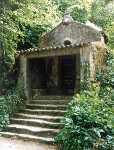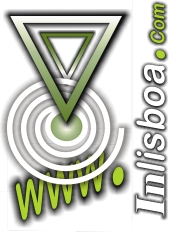

Monuments
History
The
Romans called Mons Lunae, The Mountains of the Moon, to
Sintra’s mountain. In addition, the name Sintra descends of
Cynthia, designation of the moon in adoring rites.
During the Period of the Saracen domain, it was built the
Castle
of the Moorish and the Royal Palace of the Moorish Princes, now called
National Palace of Sintra. After the Conquer, Sintra was given to the
army of the King Afonso Henriques in 1147 that donated the Charter
to the thirty inhabitants that occupied the Castle’s citadel.
Later, when
Sainted Queen Isabel
was in charge of the village, there were great works to enlarge the
Royal Palace. However, King Manuel, not satisfied with it, promoted new
works of enlargement and decor, followed
by the literary and cultural development, during the 16th century.
It is known, despite not proven, that Luis de Camões read the original
poems of Os Lusíadas to the King Sebastião in one wing of the
Royal
Palace.
This century meant the greatest development for Sintra, which was at
that time the place where decision power of the Kingdom was established.

In the 19th century, the King Fernando II, made the ordered
forestation of the mountain and supported the construction of amazing
and revivalist buildings, such as
the
Palace of Pena. This is a model of the European romantic style, due to
the mix of exotic and medieval styles.
On 6
December 1995, UNESCO approved Sintra’s classification of Wold Heritage
in the Cultural Landscape category.
This area is all the way from the village to the Pena Park, going to
Santa Maria de Arrabalde and the Castle of the Moorish. This zone
comprises the area from the Village with the Pena Park, going through
Santa Maria de Arrabalde and the Castle of the Moorish. It encloses all
the Northern side of the mountain until the Monastery of Capuchos and
the Monserrate Park, and all the way down until Colares village.
